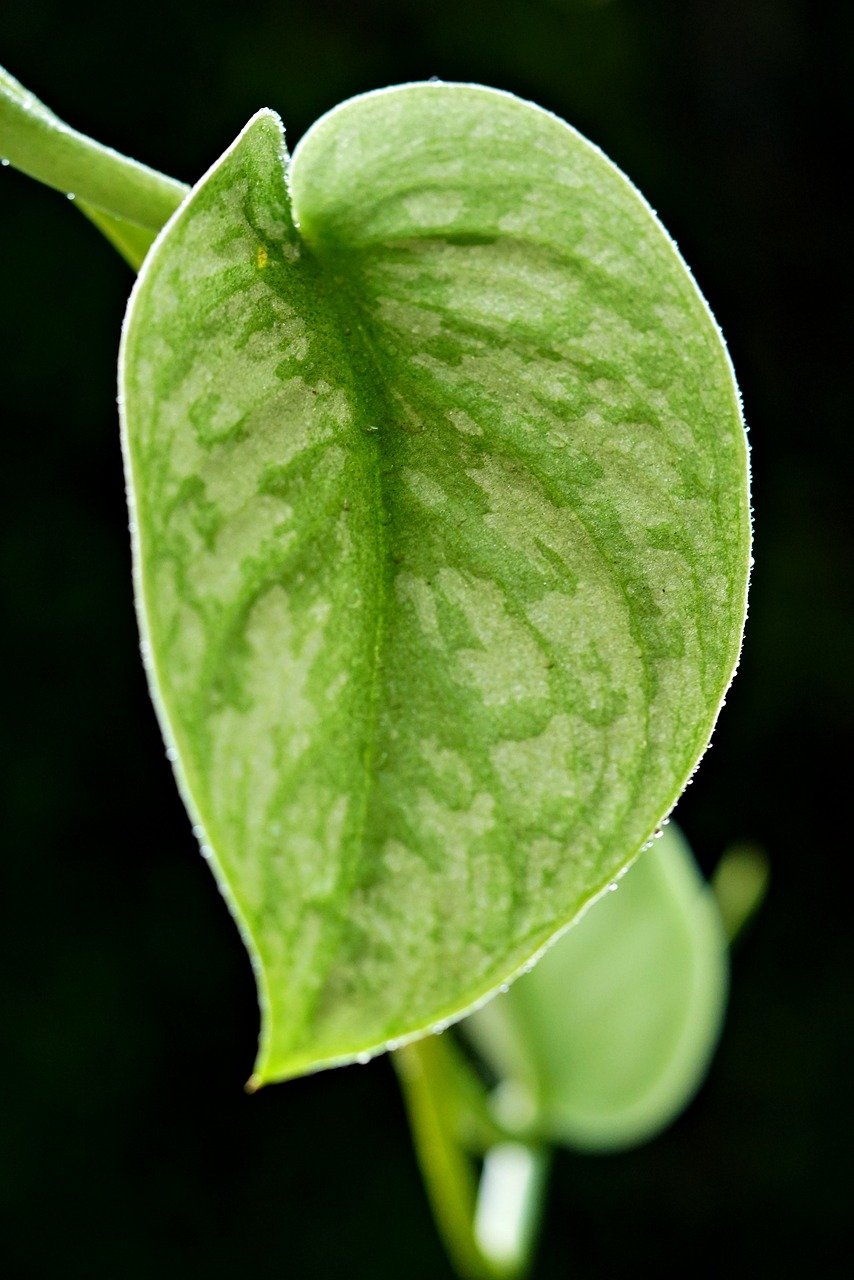Scindapsus, commonly referred to as pothos or satin pothos (particularly Scindapsus pictus), is a genus of vining plants celebrated for their beautiful, heart-shaped leaves, which often feature striking silver or gray markings. They are favored as houseplants for their visual appeal and low-maintenance care.
How to Grow Scindapsus
- Light: Prefer bright, indirect light. They can tolerate low light but will grow more slowly and may lose some variegation in dim conditions. Avoid direct sunlight to prevent leaf burn.
- Watering: Excessive watering can cause root rot, so make sure there’s proper drainage. Typically, watering every 1-2 weeks works well, depending on humidity and light.
- Soil: Use a well-draining potting mix. A standard houseplant mix with added perlite or orchid bark for aeration is ideal.
- Humidity: Scindapsus enjoys higher humidity levels but is quite adaptable. If your environment is dry, occasional misting can be beneficial.
- Temperature: Flourishes in temperatures ranging from 65°F to 85°F (18°C to 29°C). Keep away from cold drafts or extreme heat sources.
- Fertilizing: Fertilize with a balanced, diluted liquid fertilizer every 4 to 6 weeks during the growing season (spring and summer). Cut back on fertilization during fall and winter.
- Pruning: Regularly prune to encourage bushier growth and remove any yellow or damaged leaves.
- Propagation: Easily propagated through stem cuttings. Place cuttings in water or soil, and they should root within a few weeks.
Additional Tips for Scindapsus Plants
- Pests: Keep an eye out for common pests such as spider mites and mealybugs. If you notice them, treat them promptly with insecticidal soap or neem oil.
- Toxicity: Scindapsus is mildly toxic to pets and humans if ingested, so keep it out of reach of curious animals and children.
Placement for Scindapsus Plants:
Home:
- Bright Indirect Light:
- Position near east or north-facing windows where they can receive bright, indirect sunlight. This promotes healthy growth and vibrant leaf colors.
- Low Light Areas:
- Scindapsus can tolerate low light, making them suitable for darker corners or rooms, although growth may slow down.
- Hanging Planters:
- Their trailing vines make them perfect for hanging baskets or on shelves where they can cascade down.
Office:
- Near Windows:
- Place them near windows with filtered light. East-facing windows are ideal for morning sun without the intensity of afternoon heat.
- Desks and Tables:
- They work well on desks or tables where they can brighten up the space without requiring too much light.
- Common Areas:
- Consider placing them in lobbies or break rooms where they can enhance the ambiance and improve air quality.
Benefits of Scindapsus Plants
- Air Purification: Scindapsus can help remove toxins like formaldehyde and benzene from the air, improving indoor air quality.
- Aesthetic Appeal: With their attractive, variegated leaves, they add a touch of elegance and greenery to any space.
- Low Maintenance: These plants are easy to care for, making them ideal for beginners or those with busy lifestyles.
- Stress Reduction: Having plants around can reduce stress and improve overall well-being, creating a calming environment.
- Adaptability: Scindapsus can thrive in a range of conditions, making them versatile for various indoor settings.
- Propagation: They are easy to propagate, allowing you to grow new plants from cuttings and expand your collection.
Incorporating Scindapsus into your home or office can enhance the aesthetic appeal and contribute positively to your environment! Happy Gardening!!


